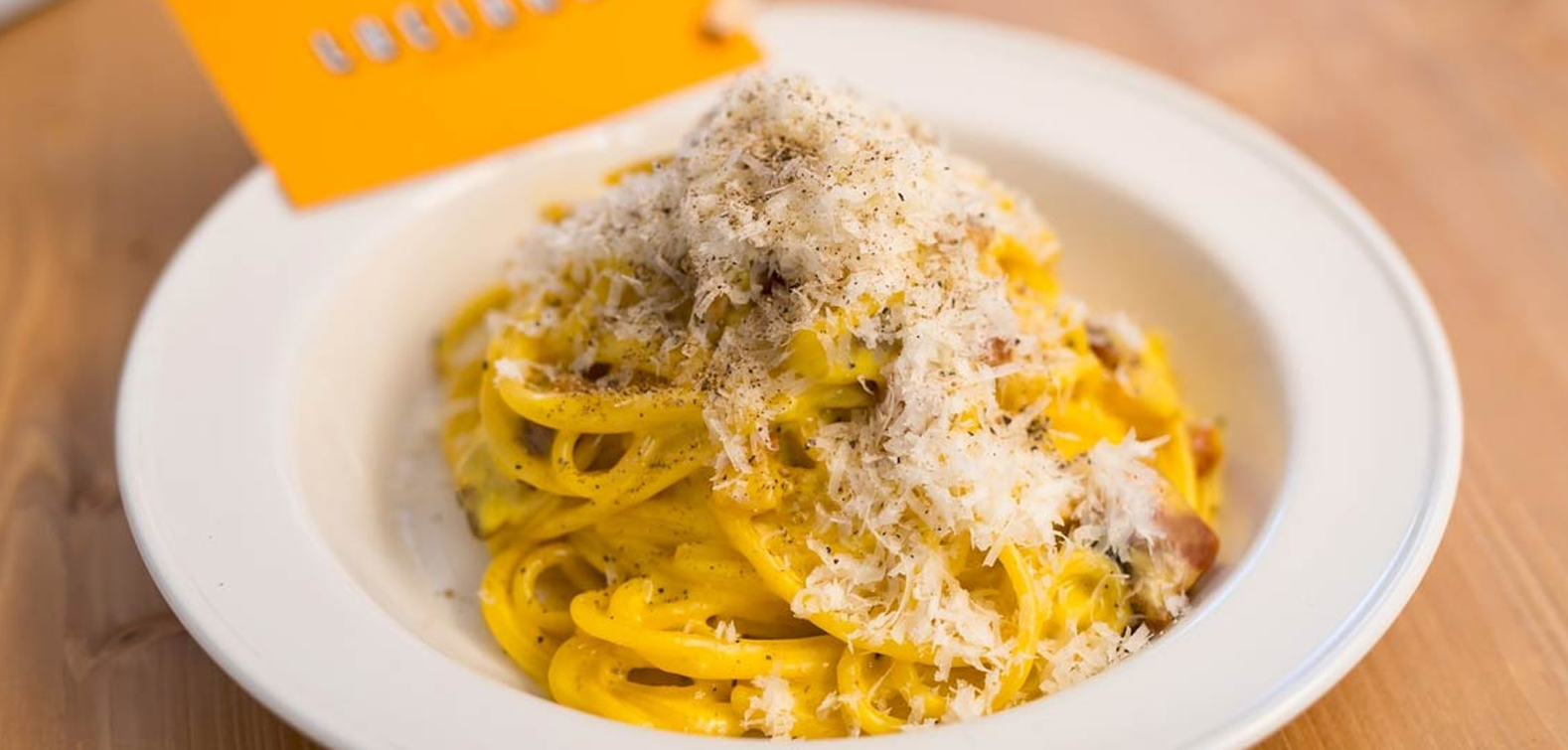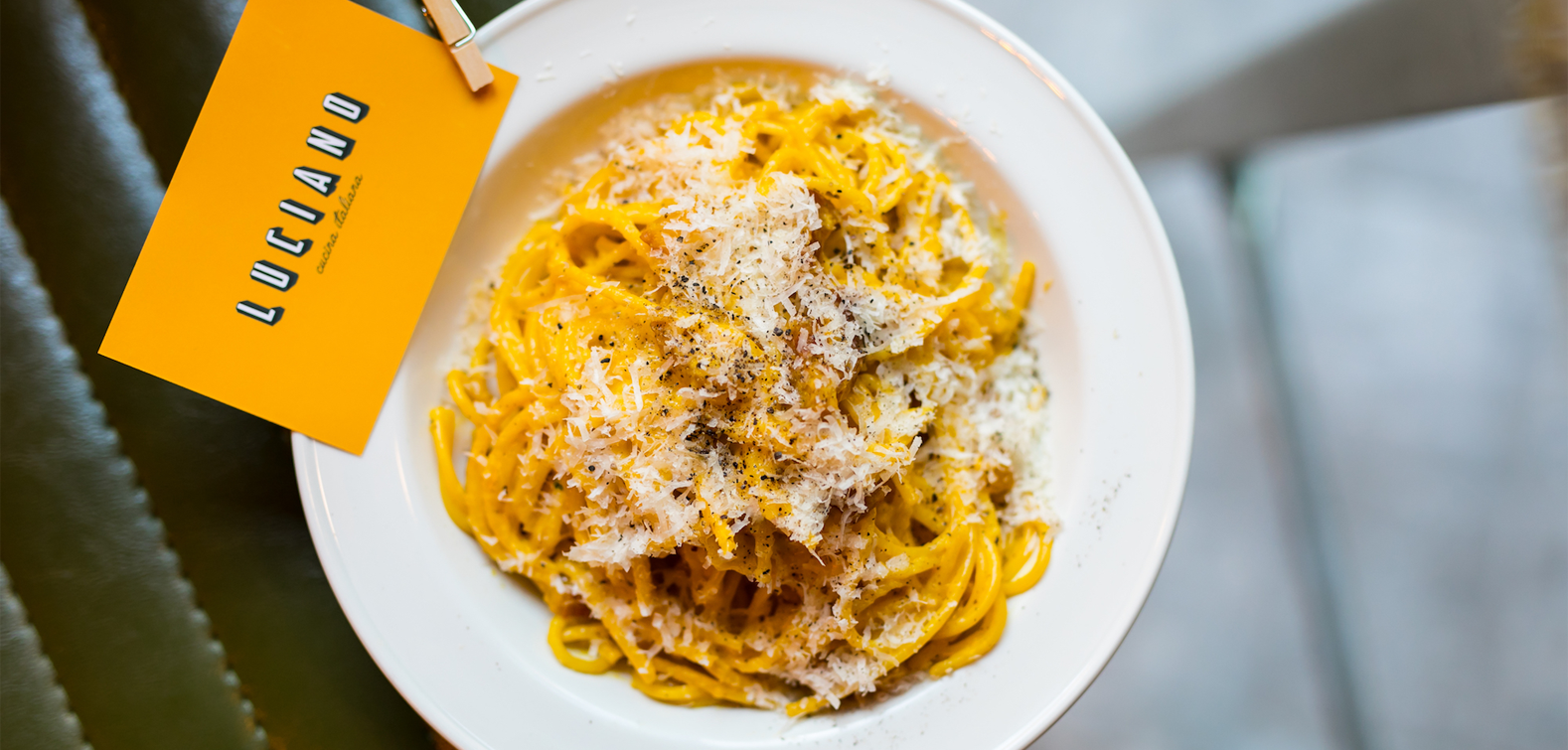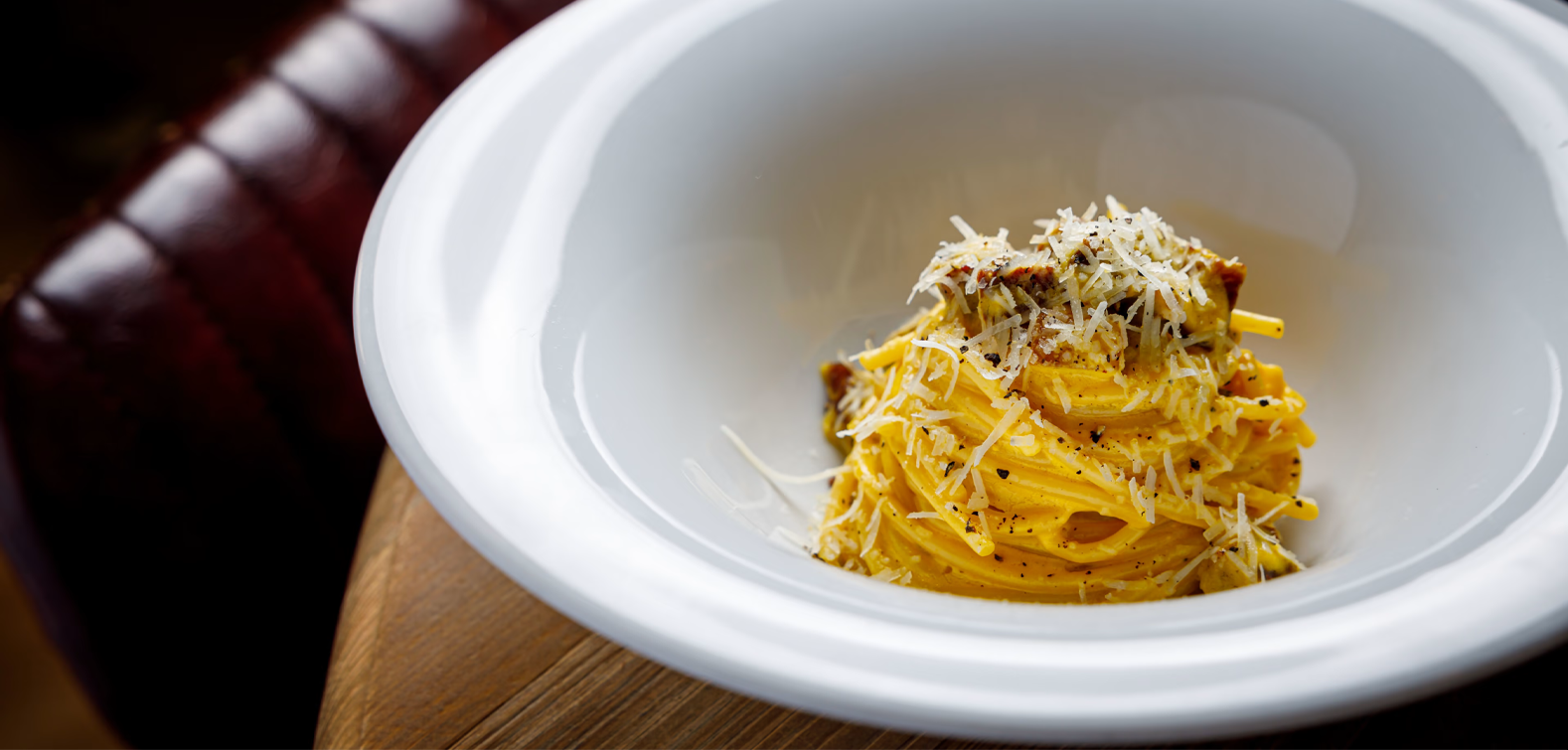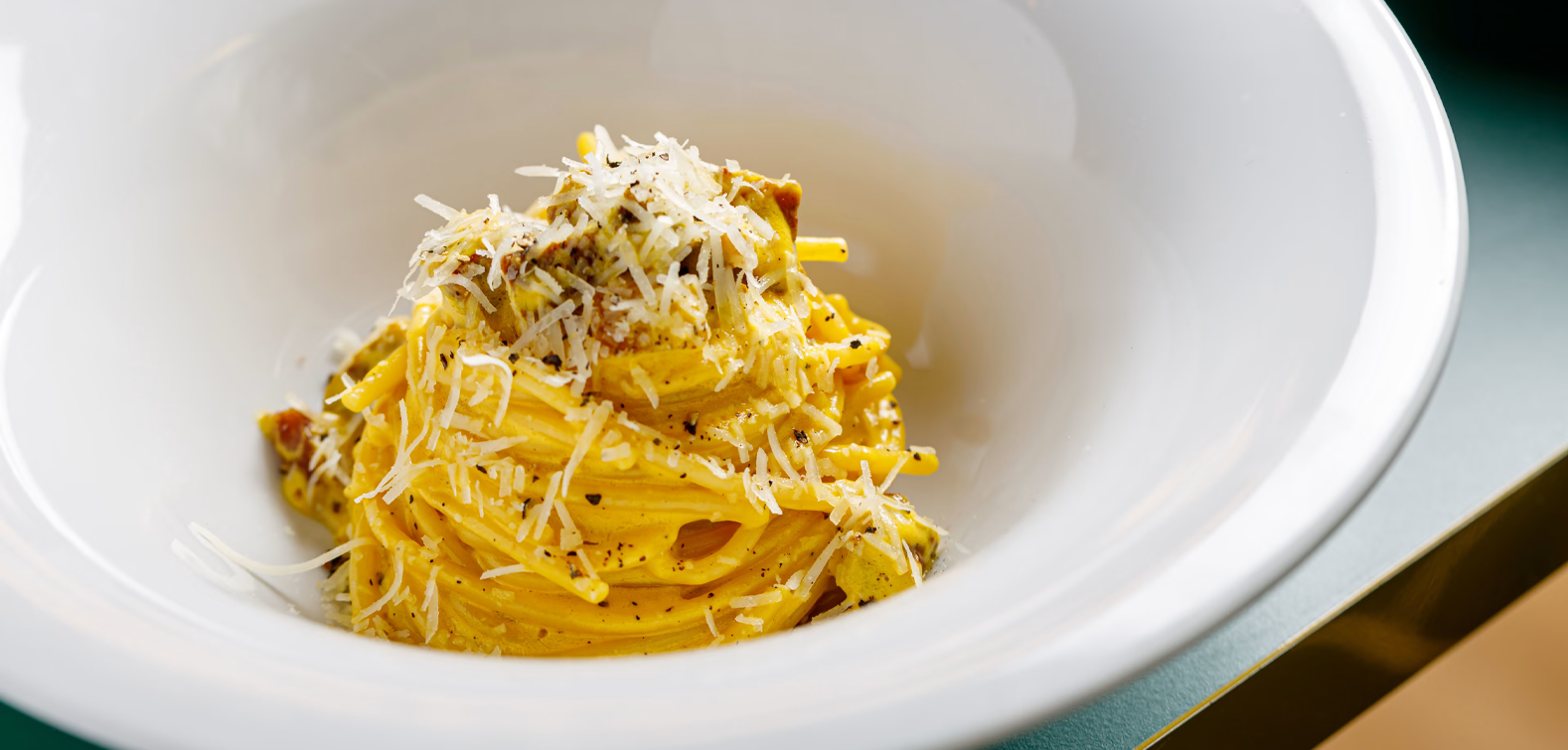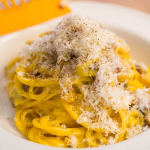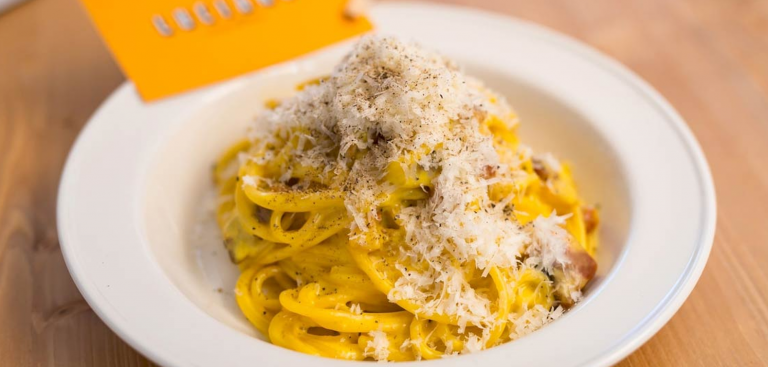
Luciano Monosillio's Carbonara
Known by some as Rome' Carbonara King, Luciano Monosillo serves some of the city's best carbonara at his eponymous restaurant—this is his signature recipe.
Chef Luciano Monosillio
Restaurant Luciano Cucina Italiana
Cuisine Italian
Servings 2
Ingredients
- 4 Egg Yolks
- 200 g Guanciale Cut into Cubes or Strips (Lardons)
- 20 g Pecorino Romano Freshly Grated (Plus Extra for Garnish)
- 30 g Grana Padano Freshly Grated
- 10 g Whole Sarawak Black Peppercorns (2 g Freshly Ground Pepper)
- 280 g Dried Spaghettoni
Instructions
- Dry-roast the black peppercorns in a small frying pan over low heat, swirling until very fragrant (approximately 4–5 minutes). Cool then coarsely grind, preferably with a mortar and pestle, and set aside 2 g of the ground pepper.
- Heat a medium sized pot of water to 160° F / 71° C. In order to concentrate the starch in the pasta water, and facilitate sauce emulsification, use just enough water to cover the pasta.
- Separate 4 egg yolks into a metal bowl and then whip in the grana padano and pecorino Romano.
- Add in the freshly ground coarse black pepper and whisk the mixture into a paste.
- Place the metal bowl atop the double boiler and whisk until the color and density change, then set aside.
- Add the guanciale to a cold pan (without oil), set the heat to medium-low, and cook until golden.
- While the guanciale cooks, bring the pot of water to a boil and then lightly salt, and heat the serving dishes.
- Once the guanciale is finished cooking, add the spaghettoni to the boiling water and cook until very al dente (~2 mins less than the pasta instructions), stirring occasionally.
- After putting the pasta into the boiling water, place a utensil underneath the guanciale pan to partially elevate it and separate the oil from the cooked guanciale. Leave both the guanciale and the oil in the pan.
- Once the pasta is finished cooking, add the pasta to the metal bowl with the egg and cheese mixture and then add in 2–4 spoonfuls of the guanciale oil.
- Add ¾ of a ladleful of pasta water and toss vigorously to emulsify. Add additional pasta water as needed to achieve the desired consistency.
- Place the metal bowl of pasta back atop the pot of boiling water and toss briefly over the double boiler to fully emulsify. Add the guanciale.
- Remove from heat and toss again.
- Plate on the warmed dishes and top with pecorino Romano and freshly ground black pepper.
Notes
This technique has sometimes been referred to as the zabaione method due to the use of a double boiler to gently cook the eggs.
The use of Grana Padano or Pecorino di Moliterno, while not strictly traditional, is increasingly common among Rome's famed neo-trattorias, as it helps to balance the saltiness of the dish. If using only pecorino Romano, reduce the amount of salt added to the pasta cooking water. Do not substitute saltier Parmigiano-Reggiano for Grana Padano; in that case, use only pecorino Romano.
Only use dried semolina pasta, and never fresh egg (pasta all'uovo) or fresh semolina pastas, for carbonara.
Warming of the serving dishes is essential to maintain the consistency of the sauce.
Watch Luciano Monosillio prepare this recipe in Carbonara: 3 Recipes by Roman Chefs or Carbonara by Chef Luciano Monosilio.
To watch Sara Cicolini make her similar and incredibly delicious version of carbonara served at SantoPalato, see this video. For Salumeria Roscioli's version, see Nabil Hassed's recipe here and watch him prepare it.
For a rough guide to the four essential Roman pastas—cacio e pepe, gricia, carbonara, and amatriciana—see this chart.
